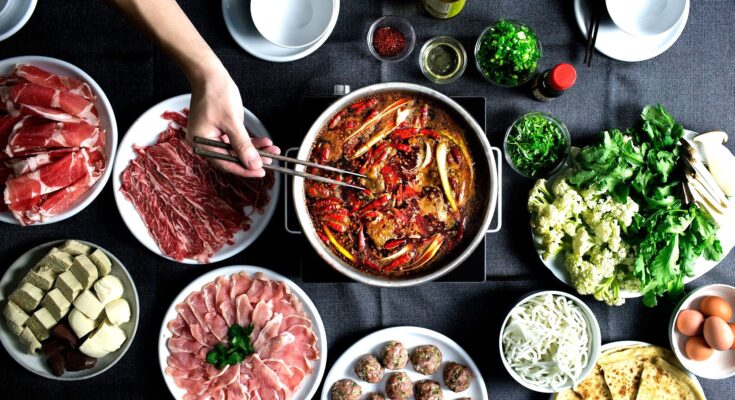Sichuan Hotpot is a famous Chinese dish that originates from the Sichuan province, known for its bold, spicy, and numbing flavors. It’s a communal dining experience where diners cook raw ingredients in a simmering pot of broth, typically placed at the center of the table. Here’s what makes Sichuan hotpot unique:
1. The Broth
Signature Flavor: Sichuan hotpot is characterized by a rich, spicy, and aromatic broth made with ingredients like Sichuan peppercorns (for the signature numbing effect), dried chilies, garlic, ginger, and various spices.
Dual Broth Options: Many hotpot restaurants offer a divided pot with two broths — one spicy and one mild, catering to varying spice tolerances.
2. Ingredients
A wide variety of raw ingredients are served to dip into the boiling broth, such as:
Meats: Thinly sliced beef, lamb, pork, chicken, and sometimes offal like tripe or duck blood.
Seafood: Shrimp, fish fillets, squid, and shellfish.
Vegetables: Leafy greens, mushrooms, lotus root, taro, and bamboo shoots.
Tofu and Noodles: Various kinds of tofu, bean curd, and noodles (glass noodles or hand-pulled noodles).
Specialties: Local Sichuan delicacies like fish balls or handmade meat dumplings.
3. Dipping Sauces
Each diner can customize their dipping sauce using a variety of condiments and ingredients, such as:
Sesame paste
Soy sauce
Garlic
Cilantro
Chopped chilies
Oyster sauce
Fermented bean curd
4. The Dining Experience
Social and Interactive: Hotpot is a group activity, making it a fun and social meal.
Adjustable Heat: The broth is kept simmering on a burner, allowing diners to cook their food to their liking.
Cultural Significance
Sichuan hotpot reflects the province’s culinary tradition of mala (麻辣), a combination of numbing (ma) and spicy (la) sensations. It’s deeply ingrained in Sichuan culture as a way to bring people together, especially during colder months.
Would you like recommendations for specific ingredients, recipes, or Sichuan hotpot restaurants? 😊


